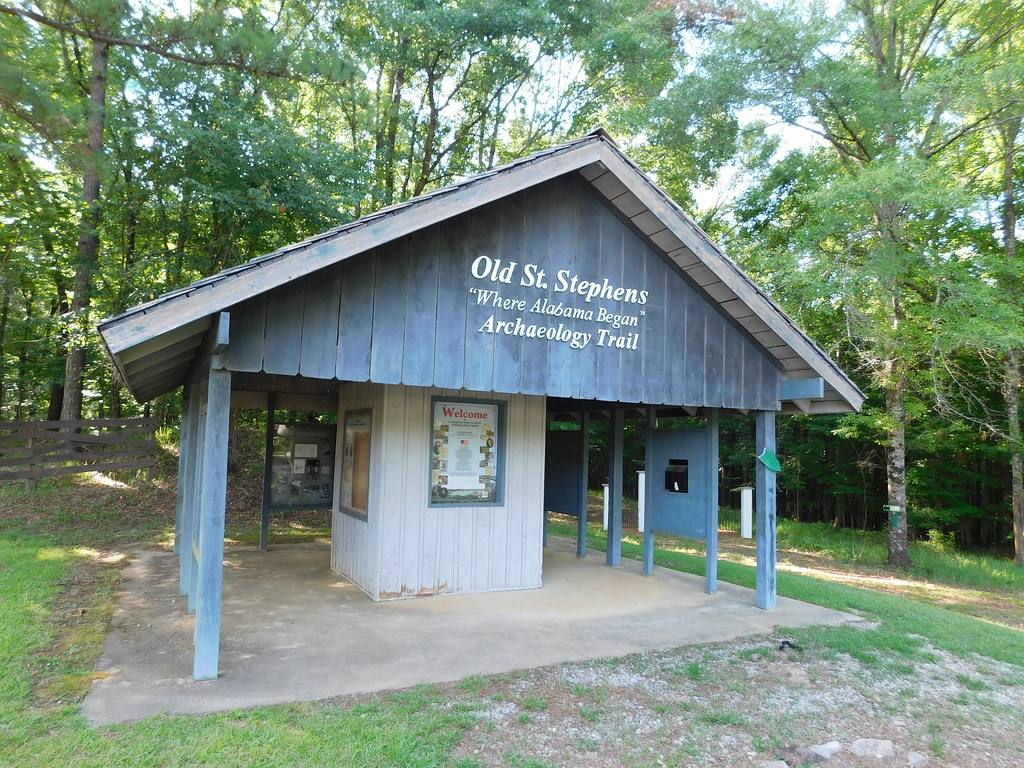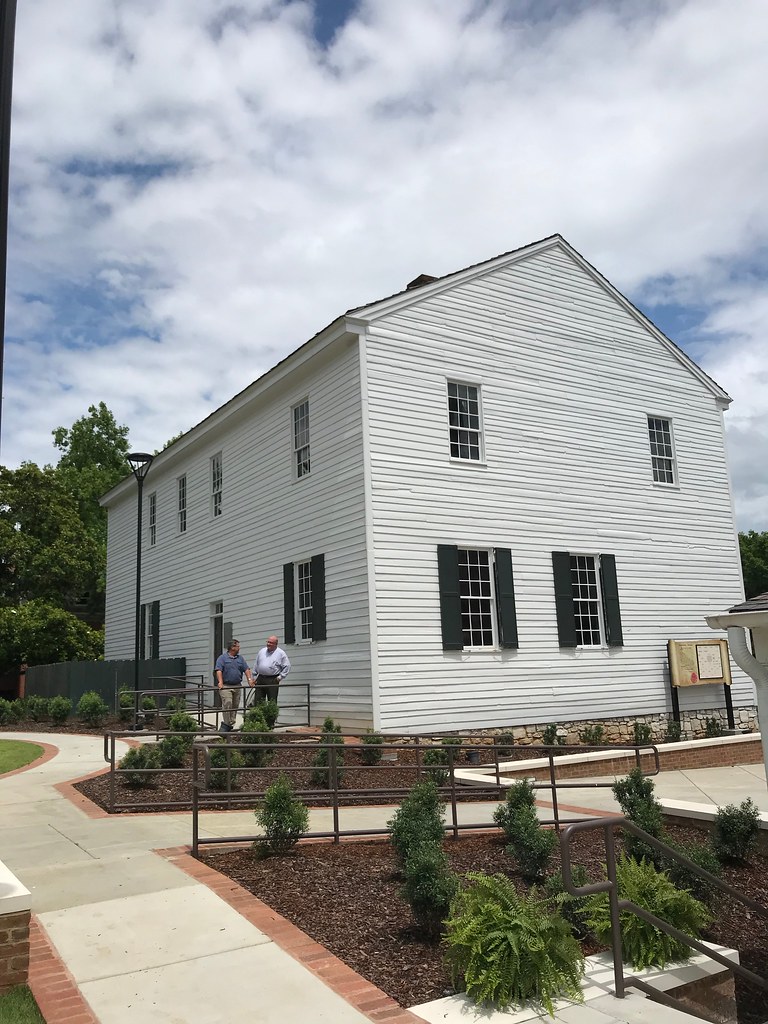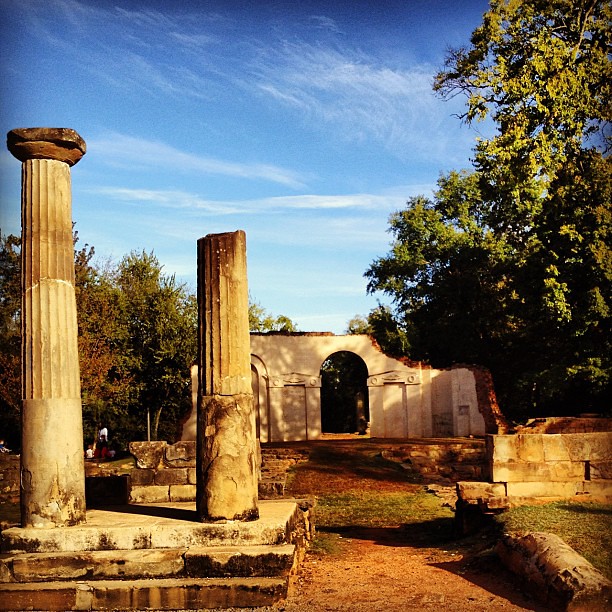It took awhile for some new states admitted to the United States to settle down with a mature governance structure. Alabama fit that exact pattern. It had five capital cities in less than thirty years.

Montgomery is the Alabama capital today (map). It has grown in size and stature to a couple hundred thousand residents within the city proper and probably about the same in the outskirts of the the larger metropolitan area. Capital cities have a natural advantage within their states: they become company towns where politicians controlling the levers of power serve as a primary industry.
Two of the early Alabama capitals seem to have done well even though they lost their status, but the other two never recovered. There’s no telling what they may have become had they remained the capital city of Alabama.
St. Stephens (Territorial Capital), 1817-1819

Alabama was a territory of the United States only for a brief period, from 1817 through 1819. Its only territorial capital was St. Stephens (map). The territorial government chose a location on the Tombigbee River at a point where boats couldn’t travel any further upstream from Mobile and the Gulf of Mexico. That was a common way to assure a prosperous settlement back in the days when water served as a primary means of transportation.
The Spanish, who previously controlled this portion of the continent certainly understood the potential when they established a fort at this spot on the Tombigbee River during the late 18th Century. So St. Stephens became a natural choice when the United States gained control and carved Alabama from the Mississippi Territory. Ultimately, however, lawmakers selected a more central location when Alabama became a state. St. Stephens declined into obscurity.
Old St. Stephens Historical Park marks the spot today.
Huntsville (Temporary State Capital), 1819-1820

Delegates gathered in Huntsville to draft a state constitution when Alabama entered the Union in 1819. They selected Cahaba (alternately spelled Cahawba) as the Alabama state capital for its more central location and its position at the confluence of the Alabama and Cahaba Rivers. The obvious problem was the Cahaba didn’t exist. It was wilderness. So Huntsville served as a temporary capital for a single legislative session until suitable facilities could be constructed in Cahaba.
The constitutional convention met at a vacant cabinet shop that is now part of the Alabama Constitution Village living history museum (map).
Cahaba/Cahawba, 1820-1826

Cahaba became the first permanent capital of Alabama. The confluence of the Alabama and Cahaba Rivers might have sounded beneficial in theory but someone must not have noticed that it sat within a frequent flood plain that also had a reputation for waterborne disease.
Settlers started moving to Cahaba where streets had been arranged in a nice grid for them. Legislators gathered and began their tasks. Homes and businesses rose upon neatly-outlined properties. Then the inevitable happened: a flood struck the new capital city. Detractors used that as an opportunity to move the seat of government elsewhere.
Afterwards, Cahaba held-on and even grew in size until the Civil War. It became a shipping point for cotton heading downriver to the port of Mobile and as a stop along a prominent railroad line.
Notice the Google Map with the nice street grid and all of the individual property lines (map). Now switch that into satellite view. The streets still exist primarily as bare earthen paths but the lots have been abandoned. Cahaba is nothing more than a ghost town today.
The town went into decline as a result of the war plus additional flooding. A former slave purchased the town in the late 19th Century (certainly a poetic change of fate) and he demolished most of what remained. Only a few ruins mark the town today. They are part of the Old Cahawba Archaeological Park.
This new capital city built so boldly from scratch within the wilderness ultimately failed.
Tuscaloosa, 1826-1846

Tuscaloosa came next (map). It had been incorporated in 1819 so it wasn’t appreciably older than Cahaba. Yet it fared much better that Cahaba when it also lost its status as a capital city. More than two hundred thousand people live in and around Tuscaloosa in modern times compared to zero for Cahaba. Much of that had to do with an event that occurred in Tuscaloosa while it still reigned as a capital city: the founding of the University of Alabama in 1831. Could Cahaba still be thriving today if the University had been founded a decade earlier? It’s an interesting proposition.
Nonetheless, Tuscaloosa was unable to retain its status. The capital shifted to Montgomery twenty years later. This recognized the importance of geography in a state where cotton dominated, as described in the Encyclopedia of Alabama. The ruins of the Tuscaloosa Capitol Building are now located in Historic Capitol Park.
The seat of Alabama government has remained in Montgomery since 1846.

Leave a Reply